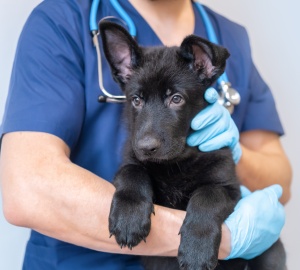
The growing threat of antimicrobial resistance (AMR) has progressed beyond clinical settings and now poses a complex challenge spanning healthcare, veterinary environments, and the broader ecosystem. Two recent studies, Elton et al. (2024) and a preprint veterinary study from Elton et al. (2025), present a genomic lens through which to view AMR transmission within and between human and animal environments. Both employ Oxford Nanopore Technologies (ONT) for sequencing and feature Zymo Research products for sample preservation and DNA extraction, highlighting the increasing importance of robust microbiome tools in environmental surveillance.
A dual perspective: hospital and veterinary environments
Elton et al. (2024) investigated carbapenem-resistant Enterobacterales (CRE) in a tertiary referral hospital in North London. Using whole genome sequencing, the team traced potential CRE transmission pathways between patients and the hospital environment. Notably, they identified blaOXA and blaNDM antibiotic resistance genes not only in clinical isolates but also in wastewater and high-touch surfaces within the ward environment. The presence of these genes in hospital wastewater raises concerns about the escape of multidrug-resistant organisms (MDROs) into public water systems, with implications for community and environmental health.
In parallel, the 2025 veterinary study extended the research to a companion animal hospital, revealing similar findings. Evidence of resistance genes such as aph, sul, tet, blaCARB, and blaTEM was found in shared animal-handling areas, including surgical preparation and dog wards . The overlap of AMR genes between clinical isolates and environmental samples suggests potential bidirectional transmission routes - animal-to-environment and vice versa - highlighting the potentially overlooked role of veterinary facilities in AMR propagation.
Metagenomics: a transformative tool for AMR surveillance
Both studies demonstrate the value of metagenomic approaches in detecting and characterising AMR genes beyond what traditional culture methods reveal. Crucially, in both settings, metagenomic data identified resistance genes in locations that were not flagged by conventional microbiology. This gap illustrates the importance of genomic surveillance for a more comprehensive understanding of AMR reservoirs and transmission dynamics.
However, current metagenomic methods - particularly in complex environmental settings - require optimisation to improve sensitivity and resolution. The studies’ recommendations for refining sampling strategies and increasing sequencing depth should be taken on board by the wider infection prevention and control (IPC) community, especially in light of the under-detection of key genes in some samples.
The role of Zymo Research products
Both studies relied on Zymo Research reagents for sample stabilisation and DNA extraction, using DNA/RNA Shield for biospecimen preservation and the ZymoBIOMICS™ DNA Miniprep Kit for microbial DNA isolation. In the clinical study, these tools preserved environmental samples prior to metagenomic sequencing, while in the veterinary study, they formed the backbone of a highly standardised workflow for capturing microbial DNA from swabs, wastewater, and gels. ZymoBIOMICS™ Microbial Community Standards were also used as controls to ensure reproducibility and benchmarking of sequencing data.
This consistent usage across very different environments not only validates the reliability of Zymo’s products in high-contamination, low-biomass settings but also points to the growing need for standardised kits in multi-sector AMR studies.
Toward coordinated AMR policy and surveillance
The overlap in findings from these two settings - human hospitals and companion animal care - strongly supports the integration of genomic surveillance into AMR policy. Both studies revealed environmental hotspots rich in resistance genes, especially in wastewater and communal areas. This highlights the need for genomic surveillance data for pathogens and AMR genes within human and animal healthcare environments, to inform IPC protocols across sectors, and reinforces the need for unified monitoring frameworks.
Importantly, these insights should inform the development of national and international guidelines for genomic AMR surveillance in veterinary and healthcare facilities. Given the lack of standardised protocols in the veterinary sector, as highlighted in the companion animal hospital study, the integration of metagenomics into IPC practices could bridge a critical gap.
Conclusion
Together, these studies advance our understanding of AMR in real-world clinical and veterinary settings, moving beyond theoretical discussions to practical, data-driven interventions. With tools like metagenomics and robust sample processing technologies from Zymo Research, the path forward involves improving sensitivity, expanding sampling strategies, and, critically, institutionalising genomic surveillance across all sectors of healthcare.
Recognising and addressing hidden reservoirs such as drains, surfaces of operating rooms, and the kennels of veterinary wards will be central to the success of combating the global AMR crisis.
References
Elton, L., Williams, A., Ali, S. et al. Tracing the transmission of carbapenem-resistant Enterobacterales at the patient: ward environmental nexus. Ann Clin Microbiol Antimicrob 23, 108 (2024). https://doi.org/10.1186/s12941-024-00762-8.
Elton, L., Dupuy Mateos, A., Frosini, S.M. et al. A metagenomic approach to One Health surveillance of antimicrobial resistance in a UK veterinary centre. BioRxiv (2025). https://doi.org/10.1101/2025.02.12.636430.
